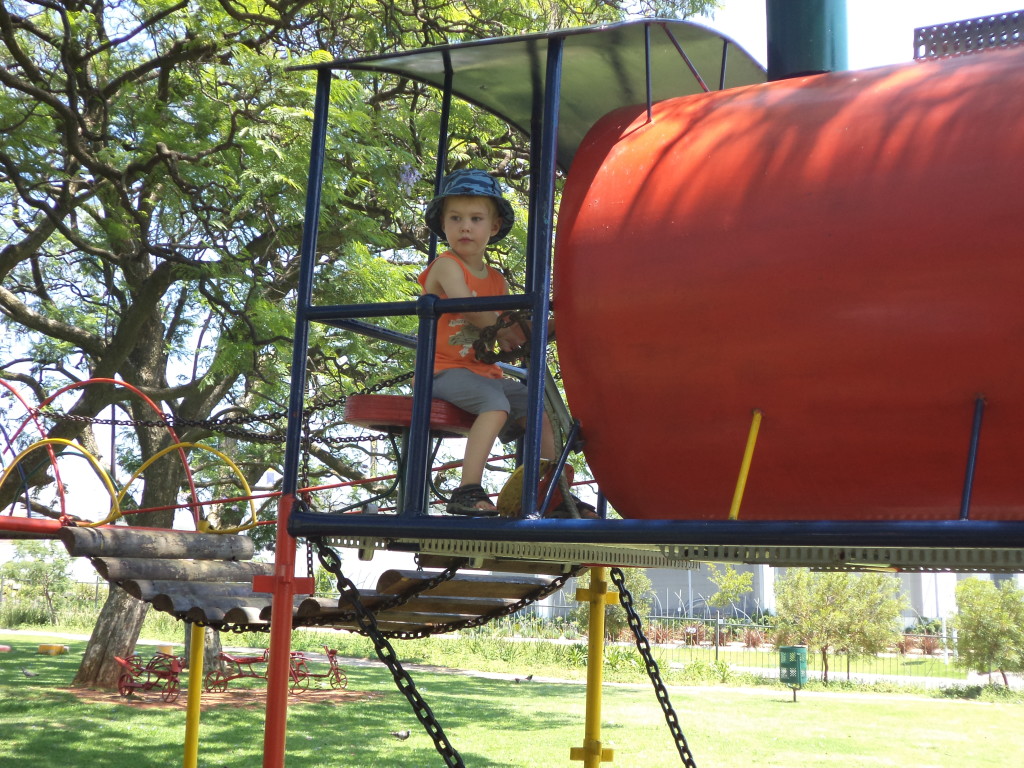
Namaqualand is located north of the fertile and prospering Cape Peninsula. It is bordered in the south by a small town called Garies, the east by the arid Pofadder, in the north by the mighty Orange River and in the west, it reaches the rugged coastline of the Atlantic Ocean.
This is an arid, dry semi-desert located in south-western Africa and extends more than 600 miles along the west coast. To get to this area, you first need to drive through the Swartland (named after it’s rich black soil) which is filled with healthy wheat fields, over the Olifants River Mountains into a valley, dense of citrus farms. North of this, you will encounter the extremely dry and harsh wilderness of Namaqualand where life is just to dry for anything to grow, or so you would think!
But after a short winter’s rainy season, a miracle occurs. This dry arid strip of desert on the west coast of South Africa, is transformed into an amazing rainbow wonderland of beauty, displaying desert wildflowers. The countless wildflowers spread over the wide plains like a very colourful carpet to mark the start of spring (August-October, depending on the rains). Most of these flowers belong to the different species of daisies.
These groups of flowers have no equal anywhere else on earth. Packed into this area is more that 3000 different plant species of which 40% are endemic, found nowhere else on earth. Thousands of tourists flock to this area during this time of the year to witness the stunning celebration of spring. Within 2 months, the season changes again, bringing dry and hot sunny days with scorching winds which turns this area back into it’s desert appearance.
This area is also rich in wildlife, anything from mammals, insects and reptiles to amphibians and great bird life. You will also find the rare bat-earned fox and even see the blue head lizard.
The Northern Cape is a very harsh world. The sun is extremely warm, baking the ground so it is rock hard. There is very high unemployment and poverty, but the people that were born here, has a great love of their place of birth. You can’t help but fall in love with this amazing place.
Botanists make trips to Namaqualand the same time each year for research or just the experience. Many rare species of succulents are found here, and many wish to study them.
Namaqualand is also valuable from a mineral point in history. Simon van der Stel sank a shaft in 1685 near Springbok and discovered copper here. This shaft still stands as a national monument together with the copper smelting chimney built in 1866.
Namaqualand is beautiful, a rare paradise. Beauty that has to be seen by the naked eye. No brush or camera can capture this amazing experience…
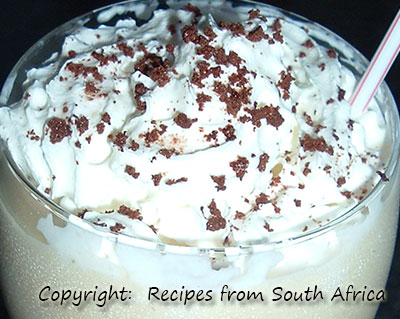
The food from South Africa is as diverse as the people that live there, influenced by many countries and cultures over the centuries. They have been able to combine all the great ingredients introduced to the country and making it their one, UNIQUE. Nothing tastes as great as South African food! Maybe I am just bias, but why not try it and judge for yourself.
One big influence on the choice of food must be the two bordering oceans, the Atlantic and Indian. Seafood plays a very important role in any diet and can be enjoyed in a great variety of ways. Shell fish, rock lobster, crayfish, salt cod, kingklip and snoek (a pickled fish) are only a few of the great dishes enjoyed very often. They can be served with onions, lemon butter, chili peppers or a great curry. The crayfish are best served braised with onions and chilies and snoek must be barbecued.
If you are looking for variety, you won’t be disappointed!South African cuisine caters for all and no matter what you prefer, you will find something on the menu to suit your taste. The food is both elegant and glows with simplicity. If you are looking for a main course and you are not a seafood lover, don’t worry. Look at the following choices and see what you like the look of.
On the top of the menu is the great Afrikaner “hoenderpastei“, or chicken pie, inspired by the British pastries, but totally different and unique. This is a pastry pot, filled with chicken, sauce, bacon, green pepper and other “secret” ingredients with a pastry top, baked until light brown and crispy in a medium hot oven.
If you are looking for lamb or beef, try the great bobotie from the Boere. This is a great dish, inspired by spices from the Malay slaves with onions, raisins and topped with a custard, comprising of egg and milk. This is usually served with yellow rice, banana, blatjang and coconut. Make sure to include a great vegetable side dish.
Maybe the warm sunshine is too inviting and you are looking to spend your days outside! If you are, you should definitely try a potjiekos, also a Boer dish. Throwing all the ingredients in a cast iron pot, letting the vegetables cook in the meat’s sauces for many, many hours. You can bake a “potbrood” (a lovely bread) at the same time, by placing the dough in another cast iron pot over the coals.
If the potjiekos is not for you, then why not try a braai (barbecue). Put some “boerewors” (a great seasoned sausage made from beef), steak, sosaties (marinated meat on skewers) and braaidroodjies (toasted sandwiches) on the fire outside in your backyard. This is the way to live! Serve with potato salad and away you go.
Frikkadelle, basically small beef patties, are greatly seasoned and taste magnificent, being served with salads and vegetables. If you are looking for very warm and comfort food, try a bredie. The most popular is a tomato or water lily bredie or stew. This is an all in one stew comprising of vegetables and mutton, with the juices from both, flavouring each other.
Bunny chow (curry stuffed in a hollow out loaf of bread) and curries have become very popular because of the Indian influence and you can buy sweet, mild or hot curries, mostly serve with atjar (pickles) and blatjang. Blatjang is chutney, and served with EVERYTHING. All you have to do is cook local fruits with garlic, chilly peppers and onions to mention just a few ingredients.
Local vegetables and fruit play a very important role in the daily diet. Tomatoes, potatoes, cabbage, mealies, green beans, sweet potatoes, spinach and pumpkin are the most loved by everyone. Sweet potato and pampoenkoekies (little pumpkin cookies, or fritters) are greatly loved dishes, served with cinnamon sugar or a sweet syrup. After your great main course, you have to enjoy desserts, snacks and drinks, but that will be discussed in the next article.
To be a guest in a South African home is a great experience. They pride themselves on hospitality, making sure you are well fed, making you feel at home at all times and creating an everlasting experience you will never, ever forget.

The Cradle of Humankind is a World Heritage Site located about 50 km (45 minutes drive) northwest of Johannesburg South Africa in the Gauteng Province. It was first named by UNESCO in 1999 and occupies about 47 000 hectares of land mostly privately owned. It contains a complex of a strip of a dozen dolomitic limestone caves, including the Sterkfontein Caves where the 2.3 million-year-old fossil (Australopithecus africanus, nicknamed “Mrs Ples”) was found in 1947 by Dr Robert Broom and John Robinson.
The Sterkfontein Caves are located within the Isaac Edwin Stegmann Reserve and was donated to the University of Witwatersrand by the Stegmann Family, which was mainly responsible for the excavation of this World Heritage Site. A section of the caves is open to the public and there is a gravel platform from where you can view the excavation site. You will also find a tea-room and small museum where information and significant findings are displayed. There are many things to enjoy whether you are a tourist, local or overseas, or a school group wanting to learn more.
The dolomite in which the caves formed, started out as coral reefs growing in a shallow sea about 2.3 billion years ago. As the reefs died, they were transformed into limestone which were much later converted into dolomite. At least 7 of the 12 sites have yielded hominid remains. Together these caves have produced over 850 hominid fossil remains. To date it represents one of the world’s richest concentrations of fossil hominid sites. These sites provide us with a window into the past, a time when our earliest ancestors lived.
Other caves include Swartkrans about 1.5 km north west of the Sterkfontein Caves. The oldest controlled use of fire was discovered here and dated back to over 1 million years ago! The roof of the Plover’s Lake located north east of Sterkfonein Caves disintegrated due to erosion and faunal remains were discovered including antelope and extinct Zebra.
Kromdraai is 1.5 km north of the Sterkfontein caves and current excavations are being carried out. The Wonder Cave chamber has a volume on 46 000 m and is about 2.2 million years old. It contains drip stone formations just like in the Cango Caves. Bolt’s Farm is 2.5 km south west of Sterkfontein and discoveries from this site include fossil elephant, pig and antelope.
Coopers is 1.25 km from Sterkfonein and became the third South African cave to yield hominid fossil when a single ape-man molar tooth was found in 1938. Gladysvale includes three underground caves and it yielded a wolf skeleton as well as the skull of a giant hyena. Lee Berger of the University of Witwatersrand discovered the first hominid specimens from here in 1991 which makes this the first new early hominid site discovered in South Africa in 48 years. Discoveries were also made at Hassgat and Gondolin.
This is a great place where you can escape to for a holiday or just a day trip. Enjoy a lovely day out or the magnificent experience of staying over for a few days.

The Cango Caves is located 26 km north of Oudtshoorn in die Little Karoo, a very warm part of the Western Cape Province. The Cango Caves is a breathtaking underground wonderland and is one of the greatest natural wonders in the world, sculptured by nature itself through the ages. These limestone formations in many different colours were formed over millions of years. The exact time it takes in making these many formations depends on the supply of both water and carbon dioxide
In 1780 a farmer named Van Zyl discovered the caves and lowered himself into the darkness with very poor light of self made candles showing him where to go. He braved the pitch darkness lowering himself 10 meters down into the first chamber, which is about 98 meters long, 49 meters wide and 15 meters high. Stalagmites and stalactites glow everywhere.
The Cango Caves was declared a natural monument in 1938 and one of the caves were opened for tourists. The first chamber was named after Van Zyl, the farmer that discovered this cave. The chamber consists of a variation of dripstone formations including Cleopatra’s Needle (9 meters high and at least 150 000 years old). The roof is a wonderful dark grey with its smoothly sculptured hollows and pendants.
In the second chamber called Cango One you can see a completed column which is about 0.5 meters in diameter and 125 meters high from the ground to the ceiling in the middle of the chamber. Some areas of the cave are so low that you have to bent your knees to walk. The route continues via Jacob’s ladder, stairs that lead to the top, over a chamber that leads to a group of smaller chambers. Here you have to climb a steep ladder that leads to a small hole where you have to crawl through on your hands and knees. At the end you have to sail on your stomach through a letterbox. This is a great experience for those that feel adventurous!
In 1972 three professional cave guides broke through to the second cave and name this Cango Two. An indescribable fairytale world that stretches another 270 meters. In 1975 another extension of about 1 600 meters were discovered and is known as Cango Three. Both Cango Two and Three is not open to the public so its pure crystal beauty can be preserved and protected. The colours are as beautiful and bright as it was when first discovered.
One negative consequence of Cango One being developed and opened to the public is that warm air breathed out by tourists has caused the bright colours to fade over the years. The temperature in the Caves is a warm and humid 18°C.
You can watch a documentary program about Cango Two and Three when you visit the caves. Even though you are not allowed in, you can still experience it …

The highlight of South African living is the breakfast, desserts, snacks and drinks. Easy to please anyone. Breakfast varies between “mieliepap” and “beskuit”. “Mieliepap” is the same consistency as polenta and served with a teaspoon of sugar, butter and milk. A great creamy and healthy breakfast to see you through the morning hours. “Beskuit” is rusks, dough baked in the oven, broken apart and then places back in the oven to dry out. The perfect breakfast, specially for those living on farms, is home made rusks, dunked into your morning coffee. If you are more of a tea lover, try the great local herbal tea called “rooibos”
During the morning you can chew on some “biltong” which is salty dried meat or “droëwors”, which is dried sausage. You can not watch any rugby or cricket match without this salty snack. By now it is time for more coffee served with banana, ginger of mealie bread, smeared with butter. Mealie bread is a sweet bread, baked with sweet corn. You will probably wonder why we have such an obsession with mealies? Well, mealies basically are Africa’s staple food. We use it to make breakfast, bread, crisps (or chips) and many more.
After you finish this, it is time for your main meal of the day. And then the BEST course arrives, the dessert. Most puddings are baked pies served with custard and ice cream or a special sauce. Malva pudding is one of the old time favourites, a great, sweet tasting spongy apricot dessert with a lovely sweet sauce. Cottage pudding is a type of cake pudding served with a special white wine sauce.
If you prefer a colder dessert, this is the place to be. Enjoy a fresh fruit salad with ice cream, made from local seasonal fruit. The most famous fruits are grapes, apples, naartjies (a type of tangerine), peaches, apricots, mangoes, melons and many more. There is nothing more refreshing than a fresh fruit salad. If you like ice cream, there are special treats in store for you as well. Try the watermelon or papaya flavoured ice cream in a cone or on its own.
As a special treat, why not try a Dom Pedro? This is ice cream with a little drop of milk and a shot of your favourite whiskey of liqueur. Try Amarula liqueur, made from the potent marula fruit or van der Hum liqueur, made from fresh naartjies. This is a treat you should not pass on.
Later the afternoon you can enjoy some “koeksisters”, a very sweet delicacy. Afrikaans “koeksisters” are twisted pastries, deep fried and then sweetened with a very sweet sauce. Another favourite of mine is “ystervarkies”, a sponge cake, dunked in a home made chocolate sauce, rolled in coconut! Doesn’t that just sound magnificent?
If you prefer something less sweet, try the “melktert” (milk tart). This is a milk-based tart, absolutely gorgeous if you eat it warm, just as it is made. If you want something savoury, try the “souttert” (savoury tart) consisting mostly of vienna sausages, cheese, onions, herbs and egg.
For the evening you can enjoy one the best known foods, “vetkoek”. This is a treat. You can enjoy “vetkoek” in three ways. Dunk it in your tea, butter with syrup and cheese or stuffed with curry mince. No matter which one you choose, you will not be disappointed. If you are looking for something smaller, try the“plaatkoekies” (almost like crumpets) served with marmite or syrup or maybe try some pancakes with cinnamon sugar?
During the day you will never go thirsty. If you like warm drinks, there are the many varieties of strong coffees, regular tea, “rooibos” tea, hot chocolate and my favourite, milo. This is a great drink filled with vitamins and minerals, made with warm or cold milk. If you prefer cold drinks, try the various ice teas and fruit juices. Guava, orange, grinadella, fruit cocktail, grape, peach, pear, apple, apricot and mango are only a few choices you have in fruit juices. Guava and mango must be two of the most loved choices.
If you are looking for a bottle of wine to accompany you meals, there are hundreds of local Cape wines to choose from. You will be spoilt for choice. Make sure you try as much as you can and enjoy the hospitality while you are visiting the rainbow country, South Africa.
These are only a few of the great traditional South African recipes you can try. You will need a long time to try them all. Enjoy!
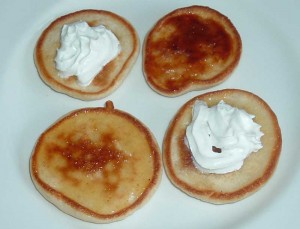
“Plaatkoekies” taste absolutely great. It is very easy to make and everyone will love it. It will be an instant hit with young and old. It tastes best when it is served with marmite or golden syrup. If you feel like treating yourself, add a spoon full of cream on top. You have to try this!
Ingredients:
1 cup of milk
1 egg
2 tablespoons of caster sugar
2 cups of flour
A pinch of salt
2 teaspoons baking powder
Method:
1. Beat the milk and egg together.
2. Add the sugar and beat well.
3. Sieve the flour, salt and baking powder together and add.
4. Let the mixture stand for 1/2 hour.
5. Place spoons full of the mixture into warm oil and fry on both sides. Turn the “plaatkoekies” over when air bubbles form on the top.
6. Spread a little bit of butter on top and add marmite or syrup.
This recipe is easy and tastes brilliant. Go ahead and try it yourself!
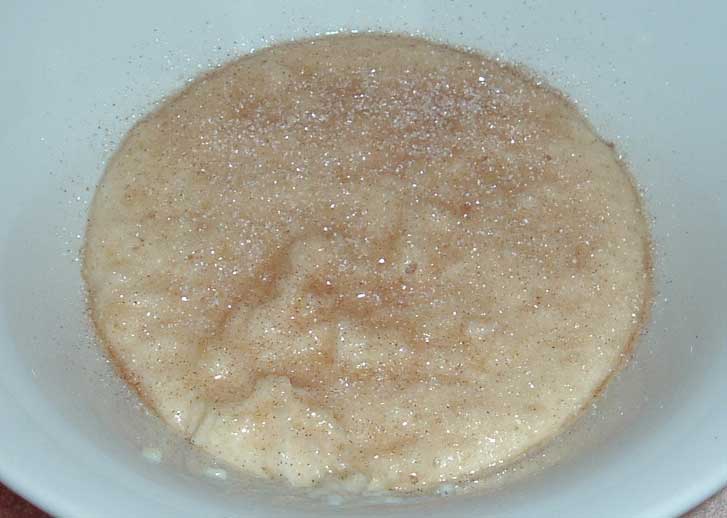
Melkkos is seker een van my gunsteling resepte. Dit is lekker om te eet en baie maklik om te maak. Al wat jy nodig het is melk, botter, meel en sout en daar gaan jy! Vir my is die belangrikste egter die kaneerlsuiker. Ek is MAL oor kaneelsuiker en eet dit oor enige kos. Dit is heerlik, jy moet dit probeer!
Bestanddele:
2 eetlepels harde botter or margarine
1 koppie koekmeel
‘n knippie sout
2 1/2 koppies melk
Metode:
- Vryf die botter by die meel en sout met jou vingerpunte in.
2. Gooi die melk in ‘n pan en bring tot kookpunt.
3. Voeg die meelmengsel bietjie vir bietjie by. Meng met ‘n houtlepel.
4. Draai die hitte tot laag en laat kook vir omtrent 5 – 10 minute. Maak seker jy roer dit baie goed.
5. Bedien die melkkos in ‘n bakkie en strooi kaneelsuiker bo-oor. Meng en eet warm.
Bedien 2

Plaatkoekies smaak heerlik, veral op ‘n koue dag! Hierdie is ‘n baie maklike resep en sal beslis ‘n baie groot gunsteling wees vir beide oud en jonk. Dit smaak op sy beste met marmite of goue stroop.
As jy lus voel om jouself te bederf kan jy gerus ‘n lepel room bo-op skep.
Bestanddele:
1 koppie melk
1 eier
2 eetlepels suiker
2 koppies meel
‘n Knippie sout
2 teelepels bakpoeier
Metode:
1. Klits die melk en eier saam.
2. Voeg die suiker hierby en meng baie goed .
3. Sif die meel, sout en bakpoeier saam en meng by.
4. Laat die mengsel staan en rus vir omtrent ‘n 1/2 uur.
5. Skep lepelsvol in warm olie en braai aan albei kante. Draai die plaatkoekies om wanneer ligbabbels bo-op verskyn.
6. Smeer ‘n bietjie botter bo-op saam met marmite of stroop.
Hierdie is regtig ‘n eenvoudige resep en smaak heerlik.
Probeer dit gerus!
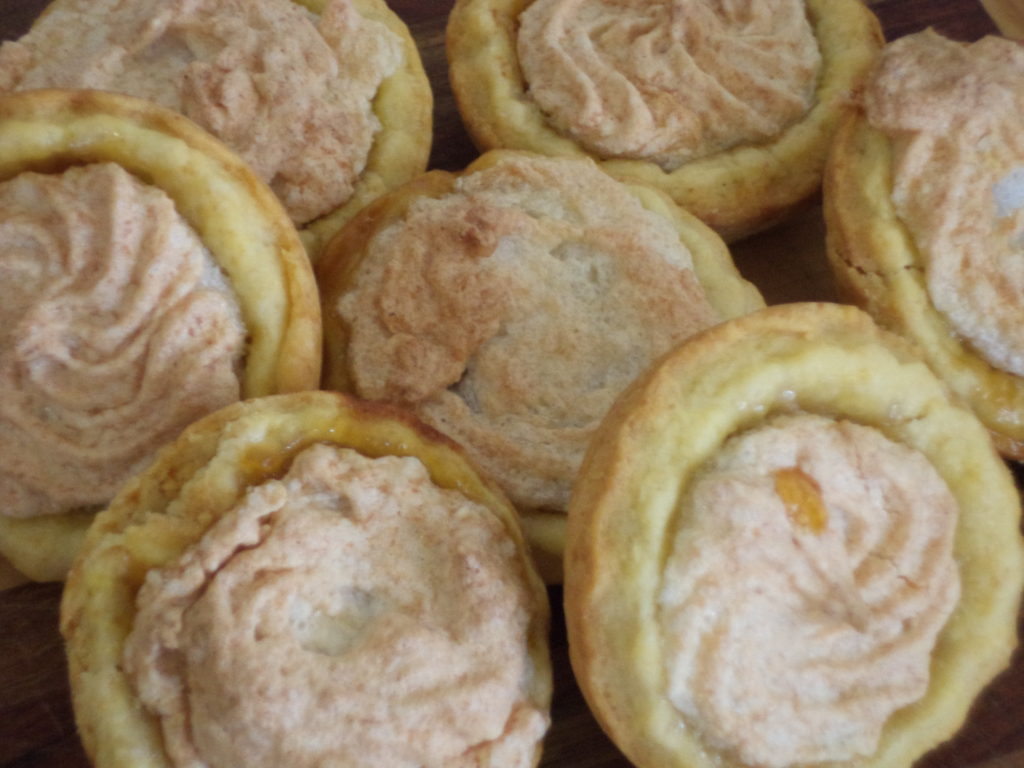
Generaal Hertzog koekies is vernoem na die persoon wie se gunsteling hierdie koekies was. In die verlede is dit gewoonlik gedoen sodat almal weet wie hiervan gehou het!
Hier volg die resep vir die koekies wat ek nou die dag gebak het. Dit smaak heerlik en is baie eenvoudig en vinnig om te bak. As jy nog nooit voorheen hierdie resep probeer het nie, daag jouself uit en moenie bang wees nie 🙂
Bestanddele:
2 koppies meel
‘n Knippie sout
2 teelepels bakpoeier
1/2 koppie margarine
3 eiers (eierwitte-en gele geskei)
1 1/2 eetlepels suiker
Indien die deeg te slap is, meng 2 eetlepels melk hierby.
Metode:
1. Sif die meel, sout en bakpoeier saam. Vryf die margarine met jou vingerpunte hierby in.
2. Voeg die gele by en laat staan vir omtrent 5 minute.
3. Rol die deeg uit en sit in klein kolwyntjiepannetjies (jy kan ook groter pannetjies gebruik as jy wil).
4. Skep ‘n klein lepeltjie appelkooskonfyt in die deeg.
Vulsel:
1. Klits die eierwitte baie goed.
2. Voeg ‘n 1/2 koppie suiker en 1 koppie klapper hierby en meng goed.
3. Skep ‘n lepel vol bo-op die appelkooskonfyt.
4. Bak in ‘n voor-verhitte oond teen 180°C vir 10-20 minute.
As jy eers een van hierdie koekies geproe het, sal dit baie moeilik wees om gou weer op te hou, so glo my, dit gaan nie te lank hou nie!
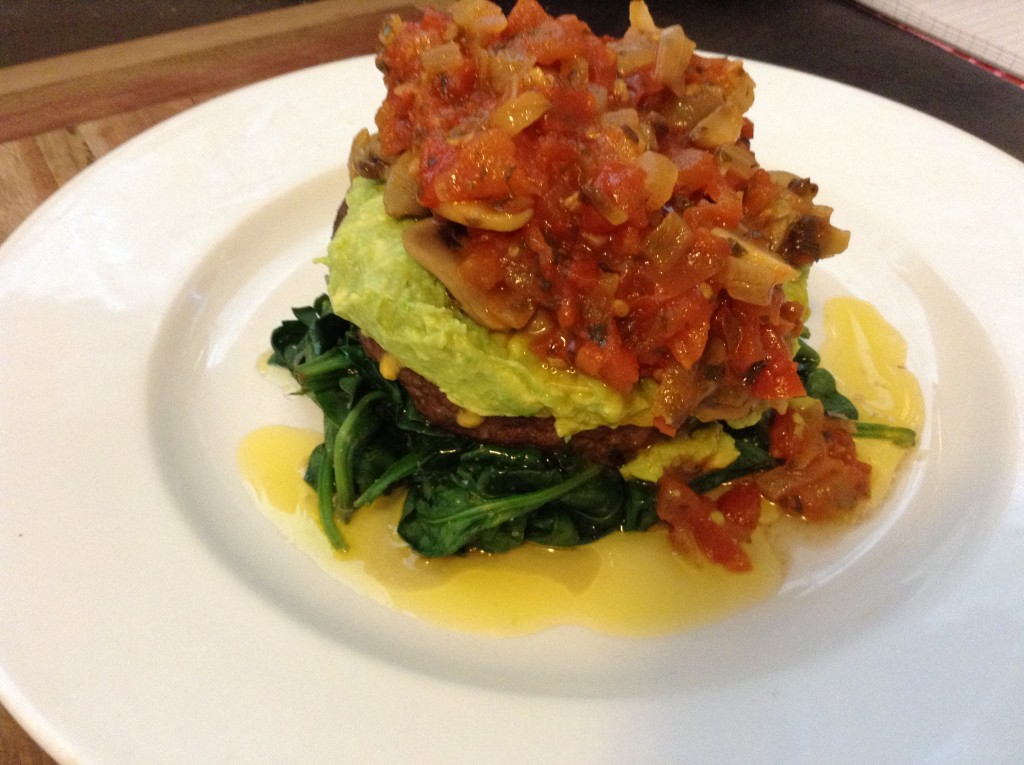
As I sit here typing on my computer, I can hear the rain falling outside, just hard enough to hear. This is called pancake weather in South Africa!! Whenever the rain comes, we bake pancakes as a family and enjoy the sound of the rain outside.
I baked pancakes yesterday when the rain started, so it worked out very well in the end. We had 2 savoury pancakes with tuna and mayo as well as ham and cheese. The traditional way you should have it though is with cinnamon sugar! Whenever I eat a pancake I remember the lovely church fates. Everyone always buy cinnamon sugar pancakes by the dozen!
I would like to share with you a great pancake recipe so you can bake them the next time you have a rainy day…
Bake while it rains and eat as you go along!
Ingredients:
5 cups of cold water
1/4 cup of oil (not too much)
3 tablespoons of white vinegar (malt is fine if you don’t have white)
6 eggs
3 cups of flour
3 teaspoons baking powder
1/2 teaspoon salt
Method:
1. Beat the liquids together.
2. Sieve the dry ingredients and add a little bit at a time.
3. Beat very well.
4. Bake the first pancake in a little bit of oil in a frying pan. (paper thin)
5. Sprinkle with cinnamon sugar, rol up and enjoy!
Try this recipe to make you feel warm inside! This recipe is enough to feed alot of people. If you are only baking for a few people, you can just halve the ingredients.
Eat and enjoy!






